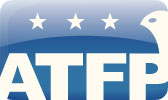Events | Daily News | About Us | Resources | Contact Us | Donate | Site Map | Privacy Policy


Economic growth in 2009 picked up significantly in the West Bank, but conditions in
Gaza remain difficult. The Palestinian Authority (PA) has continued to build a solid track
record in institution-building and economic and security reforms, supported by generous aid.
The Government of Israel (GoI) has relaxed some restrictions on movement and access in the
West Bank during 2009. However, there has been no additional significant easing of the
West Bank’s restrictions so far in 2010, and economic activity in Gaza remains severely
constrained by the persisting blockade. Real GDP growth in the West Bank and Gaza (WBG)
is estimated at 6.8 percent for 2009, consisting of 8.5 percent growth in the West Bank and
1 percent in Gaza.
The PA’s 2010 Budget builds on the progress made last year in institution-building and
public finance reforms. In 2009, the war in Gaza has imposed a burden on the budget as it
required substantial non-wage emergency spending. The 2009 recurrent deficit on a cash
basis was in line with the budget target. However, non-wage expenditure commitments were
above budgeted amounts, and there was a shortfall in donor aid relative to the budget’s
external financing requirements including Gaza’s emergency spending, which led to the
accumulation of non-wage arrears. The 2010 Budget envisages a tightening of the fiscal
stance to reduce the recurrent deficit to $1.24 billion from $1.59 billion on a commitment
basis in 2009. Toward that end, it is important to step up structural reforms, including
implementation of a social safety net and electricity sector reform, and to enhance
commitment controls and cash management to minimize further arrears accumulation and
recourse to bank borrowing.
There is an urgent need to secure adequate donor assistance to finance the 2010
recurrent financing requirements. A front-loading of that assistance is especially
important given the aid shortfalls during the first quarter of the year. External recurrent
financing requirements for April to December 2010 are projected at about $1.1 billion, given
the $174 million already disbursed in the first quarter of 2010. The $1.1 billion is in addition
to about $0.7 billion needed for public investment in the Palestinian territories in 2010.
Concerted actions by the three parties (the PA, the GoI, and the donor community) are
critical to sustain the economic recovery and reduce significant risks to the economic
outlook. Perseverance by the PA in institution-building, reforms and good governance,
supported by adequate and timely donor aid, is needed to achieve increased self-reliance and
sustain private sector confidence. A breakthrough in the peace process and removal of
restrictions on a wider scale are essential for a durable and regionally balanced growth in the
Palestinian territories. This requires action on three fronts. First, lifting Gaza’s blockade is
essential to stem the continuing decline in Gazans’ living standards. Second, removing
impediments to private and public investment in the West Bank’s Area C, which represents
about 60 percent of its territory, is needed to tap the West Bank’s full growth potential.
Finally, lifting restrictions on the Palestinian territories’ external trade, especially on exports
to Israel, is key to a sustained rise in real GDP per capita and a balanced growth pattern.
To download the full report please click below:
| Attachment | Size |
|---|---|
| 041310.pdf [2] | 520.38 KB |
Links:
[1] http://www.americantaskforce.org/resources
[2] http://www.americantaskforce.org/sites/default/files/041310.pdf